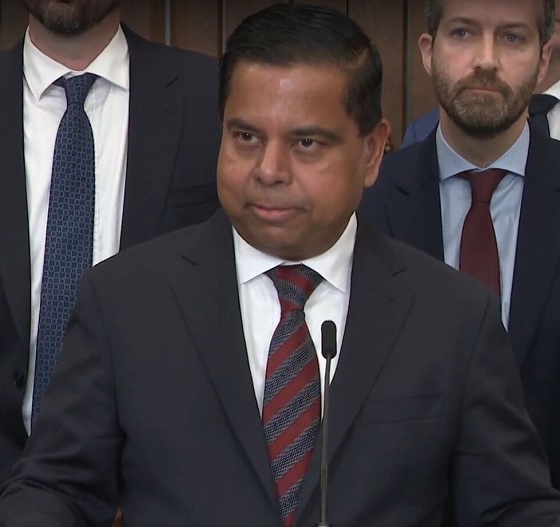Alberta
ONE RELATIONSHIP AT A TIME: THE PATH TO PROJECT SUCCESS

ONE RELATIONSHIP AT A TIME: THE PATH TO PROJECT SUCCESS

Infrastructure development is full of risks, which are managed in a number of ways. Risk management might sound cold and impersonal, but it has the potential to incent real human connections and build genuine relationships. Key risks may have leading practice on how best to mitigate, transfer, ignore or hold those risks, but when it comes to energy development across Canada, meaningful consultation and accommodation is non- negotiable. As most are well aware at this point, the Crown must consult and accommodate where Aboriginal or Treaty rights are impacted. Far from being a mandatory ‘checkbox’ in the process of project development, the undertaking of engagement and relationship-building holds the potential for mutual benefits for both the project and the impacted First Nations, Inuit, or Métis community.
Genuine relationship-building is a solid foundation for partnership on energy projects, to the benefit of both parties. This partnership can take the form of Impact Benefit Agreements (IBA) Mutual Benefit Agreements (MBA) or equity participation arrangements, among others. Both IBAs and equity arrangements have the potential to grow economic and social prosperity, but determining which approach is the best fit will be influenced by the priorities and capacity of both the developer and the Indigenous community.
In both these common approaches there are similar objectives:
- Compensation for and mitigation of potential impact
- Influence or control over project design and development
- Securing benefits for the community
- Securing social license
- Working towards consent and support of the project
- Reduced risk of opposition or disruption
- Improved financing as a result of managed risks
Both also reflect an underlying premise that it is no longer acceptable to develop resources or energy infrastructure in a manner where impacts fall to one party, and benefits to the other.
When comparing and contrasting IBAs and equity arrangements, some key considerations are the degree of potential impact, the capacity and interest of the community in the project’s development and management, the project’s term, risk tolerance of either party, and financing and funding opportunities.
Impact Benefit Agreements between a project developer and impacted Indigenous community formalize project benefits sharing. Often, these IBAs will provide some employment, training, and contracting opportunities, but the economic benefits will often be tied to the project’s degree of impact to traditional lands and lifestyle (e.g., land impacts, hunting and gathering impacts, etc.). Regardless of how well the project is performing, the IBAs will guarantee a steady revenue stream to the Indigenous community. This can be a safe bet for risk adverse councils but holds the potential for serious revenue inequity in the case where the project is successful and very profitable.
Pivoting from partnership to ownership, equity participation agreements clearly scale the revenue sharing between the project developer and community as the project success and profitability increases. If the energy project does well, the First Nation, Inuit, or Métis equity partner is also going to do well and see greater revenues. The inverse is also true. In these equity arrangements, which are becoming more prevalent in the eastern provinces, the Indigenous partner has a greater say in project operations, as they are a shareholder. It also arguably provides more security to the developers, as the Indigenous partner is a proponent of the project, and no longer a potential opponent. Both partners would look to maximize the economic benefits of the project, while minimizing the adverse economic, environmental and social consequences flowing from the project. Without focusing too much on the direct revenue arrangement, equity arrangements will often also include guaranteed or preferential opportunities for contracting, procurement, employment and training.
To be clear, in either an IBA or equity arrangement model, the duty to consult and accommodate is neither negated nor automatically fulfilled. But the relationship between developer and community becomes formalized and clearer, adding transparency and certainty to an otherwise risk-filled process.
Managing project risk is a mandatory part of project development. But the means of managing risk holds so much potential for empowerment, leadership, and benefit. Project success and economic development are not an end in themselves, but rather a means to an end – the end being healthier and more prosperous First Nations, Inuit, and Métis communities, and Canada as a whole. All the while moving the dial on reconciliation through real connections, business developments, and cultural education – one relationship at a time.
Robyn Budd was a 2019 member of the Energy Council of Canada’s Young Energy Professionals program and was a Manager in KPMG’s Global Infrastructure Advisory practice, based in the unceded territory of the Musqueam, Squamish, and Tsleil-Waututh nations (Vancouver). She was also the Leader of KPMG’s National Indigenous Network.
Zachary McCue is Founder of The Waabgaag Group, with expertise in renewable, infrastructure, and resource development, specializing in equity participation and impact benefit agreements. He is a proud member of Curve Lake First Nation and is based in Ontario.
Thanks to Todayville for helping us bring our members’ stories of collaboration and innovation to the public.
Click to read a foreward from JP Gladu, Chief Development and Relations Officer, Steel River Group; Former President and CEO, Canadian Council for Aboriginal Business.

JP Gladu, Chief Development and Relations Officer, Steel River Group; Former President & CEO, Canadian Council for Aboriginal Business
Click to read comments about this series from Jacob Irving, President of the Energy Council of Canada.

Jacob Irving, President of Energy Council of Canada
The Canadian Energy Compendium is an annual initiative by the Energy Council of Canada to provide an opportunity for cross-sectoral collaboration and discussion on current topics in Canada’s energy sector. The 2020 Canadian Energy Compendium: Innovations in Energy Efficiency is due to be released November 2020.
Click to read more stories from this series.
INDIGENOUS CONSULTATION AND ENGAGEMENT AT CANADA’S ENERGY AND UTILITY REGULATORS
Alberta
Alberta Premier Danielle Smith Discusses Moving Energy Forward at the Global Energy Show in Calgary

From Energy Now
At the energy conference in Calgary, Alberta Premier Danielle Smith pressed the case for building infrastructure to move provincial products to international markets, via a transportation and energy corridor to British Columbia.
“The anchor tenant for this corridor must be a 42-inch pipeline, moving one million incremental barrels of oil to those global markets. And we can’t stop there,” she told the audience.
The premier reiterated her support for new pipelines north to Grays Bay in Nunavut, east to Churchill, Man., and potentially a new version of Energy East.
The discussion comes as Prime Minister Mark Carney and his government are assembling a list of major projects of national interest to fast-track for approval.
Carney has also pledged to establish a major project review office that would issue decisions within two years, instead of five.
Alberta
Punishing Alberta Oil Production: The Divisive Effect of Policies For Carney’s “Decarbonized Oil”

From Energy Now
By Ron Wallace
The federal government has doubled down on its commitment to “responsibly produced oil and gas”. These terms are apparently carefully crafted to maintain federal policies for Net Zero. These policies include a Canadian emissions cap, tanker bans and a clean electricity mandate.
Following meetings in Saskatoon in early June between Prime Minister Mark Carney and Canadian provincial and territorial leaders, the federal government expressed renewed interest in the completion of new oil pipelines to reduce reliance on oil exports to the USA while providing better access to foreign markets. However Carney, while suggesting that there is “real potential” for such projects nonetheless qualified that support as being limited to projects that would “decarbonize” Canadian oil, apparently those that would employ carbon capture technologies. While the meeting did not result in a final list of potential projects, Alberta Premier Danielle Smith said that this approach would constitute a “grand bargain” whereby new pipelines to increase oil exports could help fund decarbonization efforts. But is that true and what are the implications for the Albertan and Canadian economies?
The federal government has doubled down on its commitment to “responsibly produced oil and gas”. These terms are apparently carefully crafted to maintain federal policies for Net Zero. These policies include a Canadian emissions cap, tanker bans and a clean electricity mandate. Many would consider that Canadians, especially Albertans, should be wary of these largely undefined announcements in which Ottawa proposes solely to determine projects that are “in the national interest.”
The federal government has tabled legislation designed to address these challenges with Bill C-5: An Act to enact the Free Trade and Labour Mobility Act and the Building Canada Act (the One Canadian Economy Act). Rather than replacing controversial, and challenged, legislation like the Impact Assessment Act, the Carney government proposes to add more legislation designed to accelerate and streamline regulatory approvals for energy and infrastructure projects. However, only those projects that Ottawa designates as being in the national interest would be approved. While clearer, shorter regulatory timelines and the restoration of the Major Projects Office are also proposed, Bill C-5 is to be superimposed over a crippling regulatory base.
It remains to be seen if this attempt will restore a much-diminished Canadian Can-Do spirit for economic development by encouraging much-needed, indeed essential interprovincial teamwork across shared jurisdictions. While the Act’s proposed single approval process could provide for expedited review timelines, a complex web of regulatory processes will remain in place requiring much enhanced interagency and interprovincial coordination. Given Canada’s much-diminished record for regulatory and policy clarity will this legislation be enough to persuade the corporate and international capital community to consider Canada as a prime investment destination?
As with all complex matters the devil always lurks in the details. Notably, these federal initiatives arrive at a time when the Carney government is facing ever-more pressing geopolitical, energy security and economic concerns. The Organization for Economic Co-operation and Development predicts that Canada’s economy will grow by a dismal one per cent in 2025 and 1.1 per cent in 2026 – this at a time when the global economy is predicted to grow by 2.9 per cent.
It should come as no surprise that Carney’s recent musing about the “real potential” for decarbonized oil pipelines have sparked debate. The undefined term “decarbonized”, is clearly aimed directly at western Canadian oil production as part of Ottawa’s broader strategy to achieve national emissions commitments using costly carbon capture and storage (CCS) projects whose economic viability at scale has been questioned. What might this mean for western Canadian oil producers?
The Alberta Oil sands presently account for about 58% of Canada’s total oil output. Data from December 2023 show Alberta producing a record 4.53 million barrels per day (MMb/d) as major oil export pipelines including Trans Mountain, Keystone and the Enbridge Mainline operate at high levels of capacity. Meanwhile, in 2023 eastern Canada imported on average about 490,000 barrels of crude oil per day (bpd) at a cost estimated at CAD $19.5 billion. These seaborne shipments to major refineries (like New Brunswick’s Irving Refinery in Saint John) rely on imported oil by tanker with crude oil deliveries to New Brunswick averaging around 263,000 barrels per day. In 2023 the estimated total cost to Canada for imported crude oil was $19.5 billion with oil imports arriving from the United States (72.4%), Nigeria (12.9%), and Saudi Arabia (10.7%). Since 1988, marine terminals along the St. Lawrence have seen imports of foreign oil valued at more than $228 billion while the Irving Oil refinery imported $136 billion from 1988 to 2020.
What are the policy and cost implication of Carney’s call for the “decarbonization” of western Canadian produced, oil? It implies that western Canadian “decarbonized” oil would have to be produced and transported to competitive world markets under a material regulatory and financial burden. Meanwhile, eastern Canadian refiners would be allowed to import oil from the USA and offshore jurisdictions free from any comparable regulatory burdens. This policy would penalize, and makes less competitive, Canadian producers while rewarding offshore sources. A federal regulatory requirement to decarbonize western Canadian crude oil production without imposing similar restrictions on imported oil would render the One Canadian Economy Act moot and create two market realities in Canada – one that favours imports and that discourages, or at very least threatens the competitiveness of, Canadian oil export production.
Ron Wallace is a former Member of the National Energy Board.
-

 International15 hours ago
International15 hours agoIsrael’s Decapitation Strike on Iran Reverberates Across Global Flashpoints
-

 Business1 day ago
Business1 day agoThe carbon tax’s last stand – and what comes after
-

 Business1 day ago
Business1 day agoTrump: ‘Changes are coming’ to aggressive immigration policy after business complaints
-

 International1 day ago
International1 day agoPentagon agency to simulate lockdowns, mass vaccinations, public compliance messaging
-

 Business2 days ago
Business2 days agoJustice Centre launches new petition: Keep cash legal and accessible. Stop Bill C-2
-

 illegal immigration1 day ago
illegal immigration1 day agoLA protests continue as judge pulls back CA National Guard ahead of ‘No Kings Day’
-

 Alberta2 days ago
Alberta2 days agoOil prices are headed for a hard fall
-

 National1 day ago
National1 day agoCarney promotes MP instrumental in freezing Freedom Convoy donors’ bank accounts







